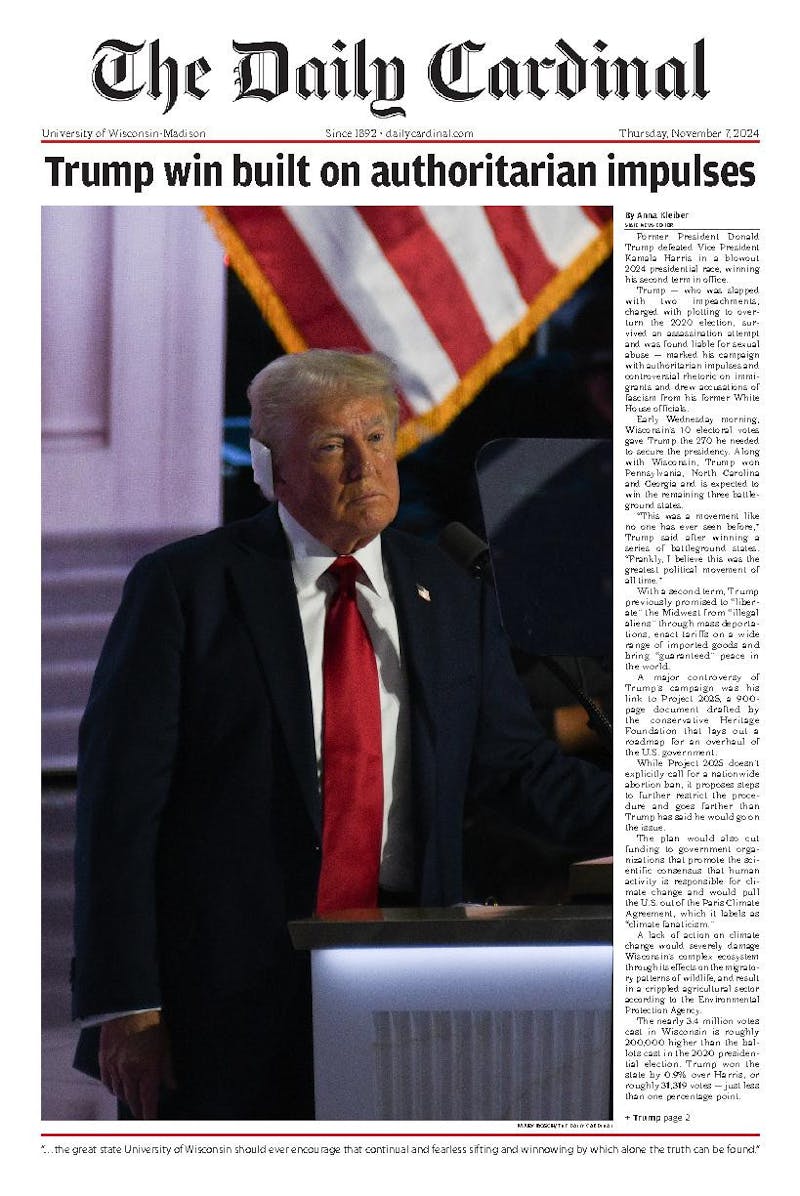NASA last week released a Hubble Space Telescope image of a rare triple eclipse of the planet Jupiter by three of its four moons: Io, Ganymede and Callisto.
The picture shows Jupiter as a large sphere in pastel bands of rose, royal blue and chartreuse. The human eye would not see the planet in the same colors, planetary scientist Erich Karkoschka said, because the image was taken by infrared cameras.
Three shadows and two moons dot the picture of Jupiter like freckles. Io, whose surface is rich in sulfur compounds because of volcanic activity, appears as a white dot in the center of the image. Its shadow is the small black dot to its left.
Ganymede is the blue dot in the upper right, and its shadow is cast on the planet's far left edge.
The third shadow, on Jupiter's upper right edge, is Callisto, Jupiter's outermost moon. Callisto itself is out of the picture to the right. The picture was put together from images taken last March.
Karkoschka, a researcher at the University of Arizona's Lunar and Planetary Laboratory, said the triple eclipse is \easy to predict' because of the rhythm of the moons' orbits. The rhythm, however, makes it impossible for all four moons-the fourth is Europa-to produce an eclipse at the same time.
The triple eclipse happens about once a decade, Karkoschka said. The last one occurred in 1997. Seeing moons along with shadows is much rarer, occurring once every several decades, he said.





